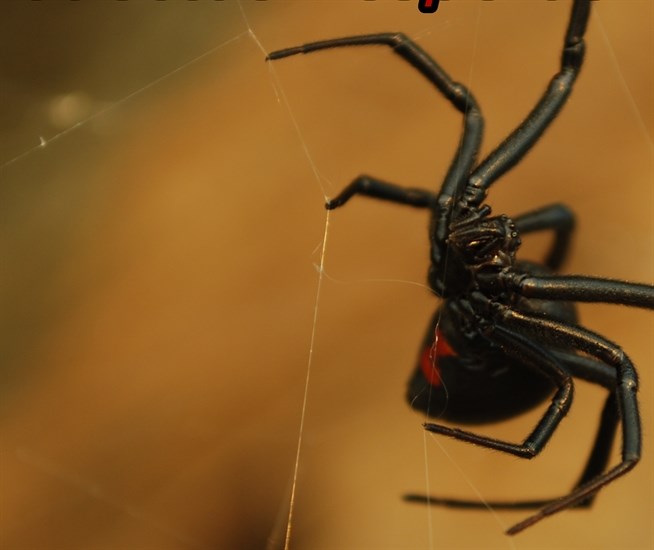
Western black widow spider.
Image Credit: Submitted: Stuart Brown
July 20, 2019 - 3:30 PM
They generally mind their own business, spend their time munching down on garden pests and mosquitos, and only one in a very long list is dangerous —and even that one is pretty wimpy when compared to others of its species.
As the summer gets underway so does a constant stream of misidentification and tall tales of possible harm, as folk across the region come into contact with our eight-legged friends.
Here at iNFOnews.ca we reached out to Stuart Brown, one half of the insect, reptile and arachnid team, The Bugs Guys to give us the low down on six of his favourite spiders that call the Interior home. As most spiders also have several subspecies living in the Interior — plus fancy Latin names — Brown keeps the names simple and reiterates, spiders are our friends, not foe.
1) Western Black Widow (photo above)
The only venomous spider in the region that is a threat to humans. Brown says black widows are very common throughout the Interior, but also very shy.
"There's a very good chance that just about anyone is going to find one in or around their property," he said. "Their venom is 15 times as potent as a diamondback rattlesnake, however, they only deliver about 100th of the amount of a rattlesnake bite."
It may sound scary but Brown said there's never been a reported death from a healthy human in the region caused by a black widow bite. While a bite could cause problems for young children, the elderly, and those allergic, antivenoms are available at local hospitals. Luckily Brown says all spiders don't want to bite people.
"Venom is highly valuable to them... they know they can't eat you so why bother wasting venom unless they really really have to." With an abdomen and cephalothorax measuring about one centimetre, and its legs doubling its size, black widows aren't very big and generally want to "run and hide" if disturbed.
2) Garden orb weaver
Brown says this spider is very common and found all over the world in different shapes and sizes and weaves the classic "Charlotte's Web" style web.
"All they are interested in is eating bugs if they are in your garden that's perfect," Brown said. They have bulbous bodies but short legs and only grow to about two centimetres in total length.
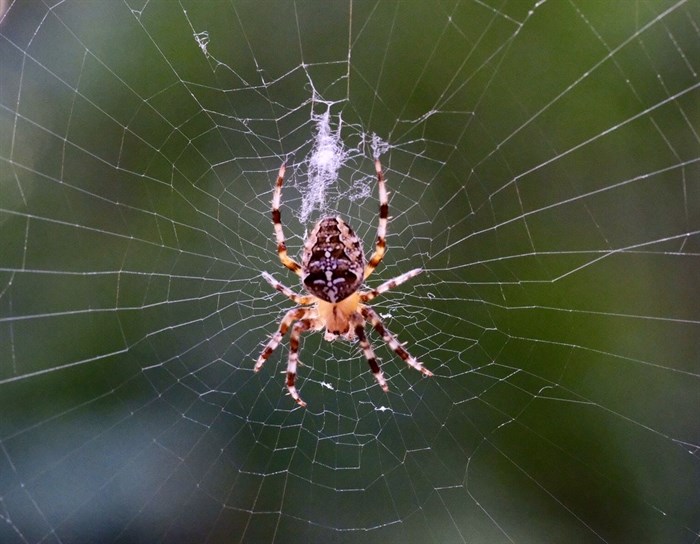
Orb weaver
Image Credit: Wikimedia Commons
3) Giant house spider
Originating in northern Europe these arachnids like cool, damp environments, and are "frequently seen in basements." Growing up to eight centimetres across, "about the size of your palm," the giant house spider is the largest spider in the region. "They are very fast and lanky," Brown said and although do grow to quite the size, their legs are far bigger than their bodies. The body of an eight-centimetre house spider would be roughly two centimetres in size.

Giant house spider
Image Credit: Wikimedia Commons
4) Wolf spider
Often mistaken for giant house spiders, Brown said wolf spiders are "very shy" and rarely come into people's homes. With a total size of about one-centimetre, wolf spiders are very small but incredible good hunters and tend to live in forests. Brown said while most spiders are "sit and wait" predators a wolf spider will spin a trap line around their territory so when a trespasser enters it alerts them. From the vibration, the wolf spider can work out exactly where the trespasser is, and blessed with good eyesight (which is a rarity in spiders) actively hunt it down.
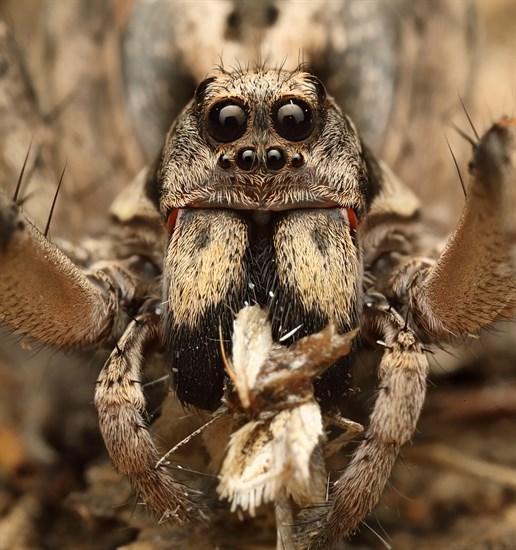
Wolf spider
Image Credit: Wikimedia Commons
5) Jumping spider
"Jumping spiders [are] some of the most intelligent spiders in the world," Brown said.
Hundreds of different species of jumping spiders are found worldwide and the Interior is home to about five of those.
"They have got two really big eyes on the front of their heads that look like headlights," Brown said. With this binocular vision, they can calculate how far away their prey is, its wing speed and where the prey is moving. "So they can take prey out of mid-air when it's flying by jumping at it."
Brown said they can leap about 10 to 20 times the length of their own body size and only grow to about two centimetres including the legs. While most spiders only use their eyes for sensing light changes, jumping spiders have good eyesight and can communicate with other spiders by waving their legs. Variations of the jumping spider make up about 10 per cent of all the spiders on the planet.
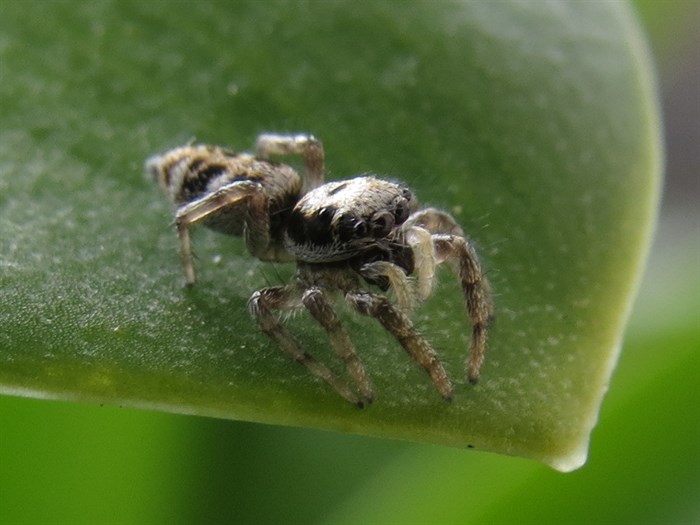
Jumping spider
Image Credit: Wikimedia Commons
6) Purse web spider
A species around 340 million years old, purse web spiders were on the planet before the dinosaurs, Brown said. While the ones that walked the earth millions of years ago grew to about one foot in length nowadays they only get to a maximum size of two centimetres in total.
"They spend most of their life underground," Brown said and are rarely seen. They make a thick mat of webbing that comes together like a purse Brown said.
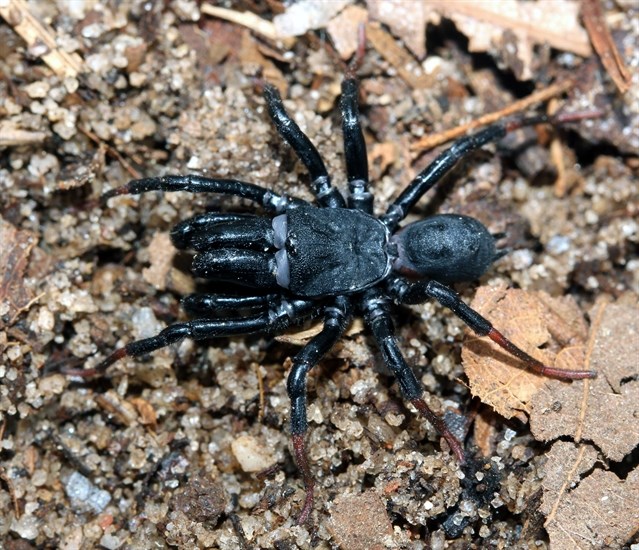
Purse web spider
Image Credit: Wikimedia Commons
7) Brown recluse spider
The brown recluse spider has an incredibly potent venom that can cause flesh-eating disease. The kicker? They don't live here.
Brown said people are constantly telling him they have seen them, but it simply isn't true.
"Lots of spiders are misidentified as the brown recluse," Brown said. "A lot of spiders look identical."
They live in the southern US and not in B.C. Brown said they're widely talked about in the medical world in North American, but regardless what people say, they're not in B.C.
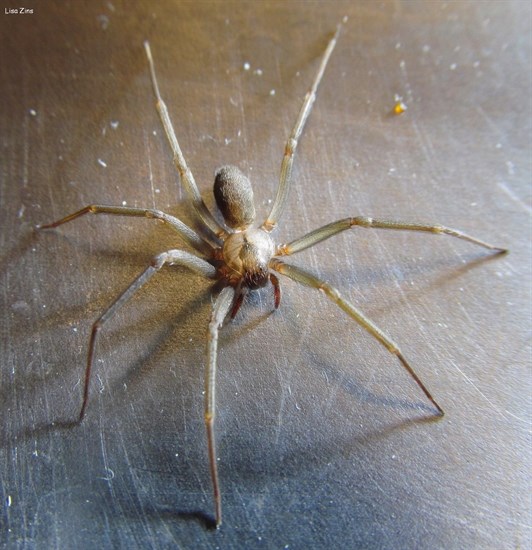
Brown recluse spider
(BEN BULMER / iNFOnews.ca)
To contact a reporter for this story, email Ben Bulmer or call (250) 309-5230 or email the editor. You can also submit photos, videos or news tips to the newsroom and be entered to win a monthly prize draw.
We welcome your comments and opinions on our stories but play nice. We won't censor or delete comments unless they contain off-topic statements or links, unnecessary vulgarity, false facts, spam or obviously fake profiles. If you have any concerns about what you see in comments, email the editor in the link above.
News from © iNFOnews, 2019